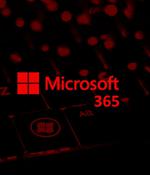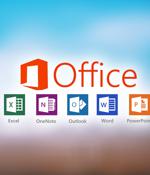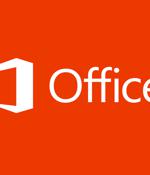Security News

It was first the pandemic that changed the usual state of work - before, it was commuting, working in the office & coming home for most corporate employees. When we had to adapt to the self-isolation rules, the work moved to home offices, which completely changed the workflow for many businesses.

Security firm Proofpoint has uncovered what it calls a "Potentially dangerous piece of functionality" in Microsoft Office 365 that allows ransomware to encrypt files stored on SharePoint and OneDrive in a way that renders them unrecoverable without dedicated backups or a decryption key from the attacker. Monetization: Now all original versions of the files are lost, leaving only the encrypted versions of each file in the cloud account.

Security researchers are warning that threat actors could hijack Office 365 accounts to encrypt for a ransom the files stored in SharePoint and OneDrive services that companies use for cloud-based collaboration, document management and storage. A ransomware attack targeting files on these services could have severe consequences if backups aren't available, rendering important data inaccessible to owners and working groups.

Zero-day bug exploited by attackers via macro-less Office documentsA newly numbered Windows zero-day vulnerability is being exploited in the wild via specially crafted Office documents, security researchers are warning. DDoS threats growing in sophistication, size, and frequencyCorero Network Security has published the latest edition of its annual DDoS Threat Intelligence Report that compiles the trends, observations, predictions, and recommendations based on DDoS attacks against Corero customers during 2021.

Follina abuses Microsoft Office to execute remote code. CVE-2022-30190, also known as "Follina", is a remote code execution vulnerability that affects Microsoft Office, reported on May 27, 2022.

Microsoft Office apps - including Outlook and Teams - are vulnerable to homograph attacks based on internationalized domain names. "Users, who are trained to validate a link in an email client before they click it, will be susceptible to click on it because it has not yet been translated to a real domain name in their browser. The real domain name would only be seen after the page has started to open," Bitdefender researchers warned.

An advanced persistent threat actor aligned with Chinese state interests has been observed weaponizing the new zero-day flaw in Microsoft Office to achieve code execution on affected systems. "TA413 CN APT spotted exploiting the Follina zero-day using URLs to deliver ZIP archives which contain Word Documents that use the technique," enterprise security firm Proofpoint said in a tweet.

More precisely, perhaps, it's a code execution security hole hole that can be exploited by way of Office files, though for all we know there may be other ways to trigger or abuse this vulnerability. On Windows, ms-msdt: is a proprietary URL type that launches the MSDT software toolkit.

Microsoft on Monday published guidance for a newly discovered zero-day security flaw in its Office productivity suite that could be exploited to achieve code execution on affected systems. Microsoft Office versions Office 2013, Office 2016, Office 2019, and Office 2021, as well as Professional Plus editions, are impacted.

Microsoft has shared mitigation measures to block attacks exploiting a newly discovered Microsoft Office zero-day flaw abused in the wild to execute malicious code remotely. The bug is a Microsoft Windows Support Diagnostic Tool remote code execution vulnerability reported by crazyman of the Shadow Chaser Group.